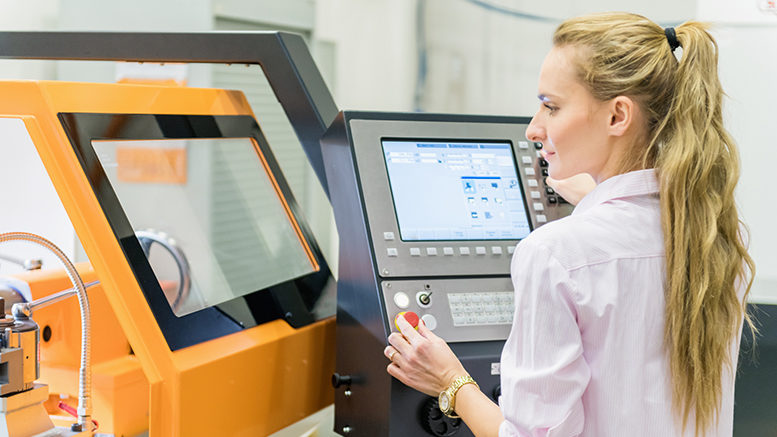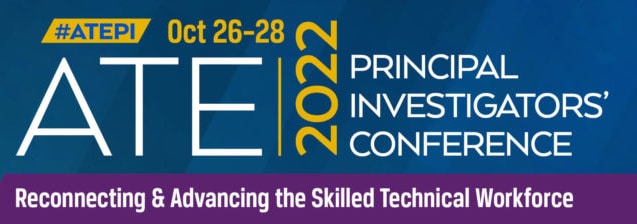The 2022 Advanced Technological Education (ATE) Principal Investigators’ Conference began this week with a virtual session for community college presidents to learn from their peers about how to use ATE grants from the National Science Foundation to attain strategic goals and improve technician education.
Rosalyn Hobson Hargraves, division director of NSF’s Division of Undergraduate Education, praised the ATE program for embodying access, equity, innovation and excellence.
“Our awards and (the) projects we fund through the ATE program indeed provide more access to STEM careers and also address inequities that we see sometimes in STEM professions,” she said.
NSF leaders want to see representation of the nation’s entire population in science, technology, engineering and math (STEM) disciplines. Hargraves said this is necessary because “in order for us to tackle those grand challenges that we as a society are facing, we are going to need an incredibly talented group of technicians, engineers, scientists, mathematicians to really address those challenges.”
Available opportunities
NSF currently funds 350 ATE grants. Since it created the ATE program in 1993, NSF has awarded a total of 1,800 ATE grants to institutions in all 50 states, Puerto Rico, American Samoa and Guam.
But there are hundreds of community colleges that have never had an ATE grant or a recent award. It is the leaders of those institutions that the American Association of Community Colleges (AACC) aimed to reach by convening this meeting. AACC and ATE Central will host follow-up virtual discussions on November 16 and on February 15.
Johnny Moore, chancellor of Arkansas State University-Newport (ASUN), described himself as having 32 years of higher education experience but being new to ATE. He has become connected to ATE through Project Vision, an ATE project that helps college leaders match innovative ideas with NSF funding opportunities. Project Vision provided mentoring to an ASUN team that submitted an ATE proposal earlier this month.
The Community College Presidents’ Initiative in Science, Technology, Engineering and Math (CCPI-STEM) is another ATE mentoring project. It “aims to galvanize, enlighten and inspire community college presidents, board members, vice presidents and chief academic officers to promulgate, encourage and support regional STEM education and workforce development at their colleges.”
Moore’s motivation is the ATE program’s grants, which range from several hundred thousand dollars to several million, and the program’s emphasis on partnerships. Since becoming ASUN chancellor in 2021, Moore said he had concluded that “success of our institution is going to be based on the partnerships we develop, whether that be with local schools, business, industries, other institutions, cities and other entities.”
ATE requires that the two-year college educators who are involved in ATE projects work in partnership with employers and other education sectors as they develop innovative STEM technician education programs.
“The best shot for us to support education of our technicians in high-technology-based fields is through ATE. That’s the only way we have a shot to do what we do, because we are routinely asked to do a lot of with a little,” he said. He noted that ASUN has a person who works with grants and that he hopes to build the college’s capacity for obtaining and managing grants.
Needed ‘venture capital’
When David Harrison became president of Columbus State Community College (Ohio) in 2010, the urban college did not have a grants office and had received just one ATE grant in the early 2000s. But Harrison had first-hand experience with the power of ATE as the principal investigator of one of the ATE program’s first center grants in the 1990s, when he was a faculty member at Sinclair Community College. He encouraged colleagues to write ATE grant proposals at other institutions where he subsequently worked.
But it took until 2014 before a Columbus State proposal to the ATE program was chosen through NSF’s competitive merit review process. It took even more time for faculty and staff to understand Harrison’s ideas for ATE and other grant-funded initiatives to provide the resources to expand their focus beyond the next semester’s schedule.
Since 2014, Columbus State has received 15 ATE grants — the most awards that a single institution has received in the ATE program’s nearly 30-year history. Columbus State faculty members have been co-principal investigators on three other ATE grants, and the college has been a sub-awardee on several other ATE grants. Altogether the college has received $8.6 million in ATE funding.
Harrison said it takes “venture capital” to keep current programs vital or to start new programs.
“ATE has been a great source of the venture capital,” he said, explaining he had to assert himself in the expansion of the grants office and at other points. But as the initial ATE projects achieved their goals, the culture of the college began to change, he said, adding Columbus State employees have come to see that ATE initiatives are in the middle — not off to the side — of the college’s strategic activities.
“It has absolutely upgraded programs across the board. It has created opportunities for partnerships with industry that we didn’t have before and would not have had otherwise. It’s been a really important leadership development opportunity for faculty and others to understand what’s possible…It’s been really transformative for us at Columbus State,” Harrison said.
Proving their worth
Sandy Kiddoo, president of Northland Community and Technical College (Minnesota), said it is not easy to quantify the benefits of the ATE programs, particularly things like faculty professional development and networking. When she became president of the rural college in the midst of the Covid pandemic, key people within the college were questioning the institutional resources being devoted to the National Center for Autonomous Technologies (NCAT). NSF awards of taxpayer money come not only with programmatic expectations but financial management requirements.
Kiddoo responded by learning more about NCAT and having the center’s principal investigator report directly to her so she had first-hand information. She now appreciates the entrepreneurial qualities of the Northland faculty, who in 2015 obtained a $199,929 ATE grant to start a drone maintenance technician program. Then in 2017, the same group of faculty received a $599,977 ATE grant to develop curriculum that combines geospatial information technology and unmanned aircraft systems technology. In 2019, the group got a $7 million ATE center grant to address national workforce issues for autonomous technologies used in the air and sea and on land.
“I have a group of people that are entrepreneurial thinkers, and they are always trying to think of what’s next,” she said.
Kiddoo’s willingness to take strategic risks was exemplified in her support of NCAT leading Experience STEAM, a five-day interactive program in August at the Mall of America in suburban Bloomington, Minnesota. The mall is a six-hour drive from the small, rural college.
NCAT organized the hands-on, high-tech experiences for adults, teens and children as a regional effort with national implications for student recruitment. Center personnel worked with the staffs of 26 currently and previously funded ATE projects, and 44 organizations, ranging from local nonprofits to multinational corporations, and 23 Minnesota public colleges and universities to deliver workshops, camps, academic competitions and a wide array of “activations” with drones, robots and virtual reality in the mall’s public spaces.
“Coordinating that was no easy lift for a small team, but they were able to leverage all those [ATE] networks,” Kiddoo said.
This fall, the Northland community and local residents will benefit from what NCAT team members learned from Experience STEAM when they work with other Northland faculty to offer similar learning activities at the college. Kiddoo has allocated Perkins funds to support the local interactive program.
NCAT’s use of virtual reality for faculty professional development and implementation of competency-based curriculum are among the innovations that have already been adopted by other Northland programs.
“The idea of innovation is built into our strategic plan….That’s hard to monetize, but that has been the benefit [of ATE] for Northland,” she said.
Successes that lead to more successes
Annette Parker, president of South Central College (Minnesota), said ATE grant support of innovations in the college’s mechatronics program has “driven a lot of innovation and it has provided vision to other divisions and other departments about ‘What might we do.’”
In 2013, the college received an $896,261 ATE grant to create a distance learning mechatronics program with portable trainers devised by faculty. In 2020, it received a $1.5 million ATE grant to expand its program for mechatronics, process instrumentation and control technicians to rural high schools Nebraska and Minnesota.
Encouraging innovation does require institutional infrastructure. At South Central, that has meant building a grants department, placing staff in the business office to focus on meeting grant requirements, and having a vice president for strategic partnerships who works with faculty to develop programs with the college’s partners. She also emphasized that college only pursues grants that fit with its strategic plan and that the college has the capacity to carry out.
Parker said the phenomenon that she first encountered as the principal investigator of the Automotive Manufacturing Technical Education Collaborative — an ATE center in Kentucky — has continued at South Central.
“Those successes led to more successes,” she said.


